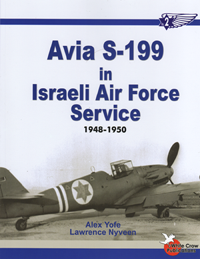This time, I promise
I got 60 pages in to the "101" rewrite before I realized that all I'm really accomplishing is a deep polish. I need to start a treatment, because I thought this script needed major surgery. I started from scratch. I outlined a new Act I. The rest is easier, since the two stories coincide after that in all drafts. I even got five pages of script down. But I'm not happy with it.
This story is bifurcate. There's no way around it. I have the squadron, which saved the country on its first mission. After that came the volunteers, who kept the squadron going and eventually ran it themselves. In my first drafts, I've run two parallel stories. I follow the volunteers' journey on one hand and the squadron's activities on the other.
Some readers criticize the lack of focus because the first act splits time between the main volunteer character and the squadron. In the new treatment, I tried to exclusively focus on the volunteer, make him the only main character - but that drops crucial action scenes that set the tone for the evolving history. How can I not show the squadron saving the country at the cost of lives, or driving enemy bombers out of the skies? Those are crucial developments. Yet by staying wit hte volunteer story, these are sidetracks, expository action scenes that just don't fit.
If I focus on the squadron, then volunteers show up haphazardly. They are placeholders, with no background or meaning. Furthermore, I don't have that volunteer character, grounded in dull normalcy, through which I'm trying to connect with the audience. He goes from sales to reborn fighter pilot in a week, and takes the audience with him. Plus, he's the draw for an American movie-watcher.
Americans didn't watch "Dark Blue World" because there were no Americans in it. Hollywood's take on the Battle of Britain focuses on an American, fictionalized it may be. On the other hand, I don't want to make a mess like "Pearl Harbor".
I'm really starting to hate this, which isn't the goal of the exercise at all.
This story is bifurcate. There's no way around it. I have the squadron, which saved the country on its first mission. After that came the volunteers, who kept the squadron going and eventually ran it themselves. In my first drafts, I've run two parallel stories. I follow the volunteers' journey on one hand and the squadron's activities on the other.
Some readers criticize the lack of focus because the first act splits time between the main volunteer character and the squadron. In the new treatment, I tried to exclusively focus on the volunteer, make him the only main character - but that drops crucial action scenes that set the tone for the evolving history. How can I not show the squadron saving the country at the cost of lives, or driving enemy bombers out of the skies? Those are crucial developments. Yet by staying wit hte volunteer story, these are sidetracks, expository action scenes that just don't fit.
If I focus on the squadron, then volunteers show up haphazardly. They are placeholders, with no background or meaning. Furthermore, I don't have that volunteer character, grounded in dull normalcy, through which I'm trying to connect with the audience. He goes from sales to reborn fighter pilot in a week, and takes the audience with him. Plus, he's the draw for an American movie-watcher.
Americans didn't watch "Dark Blue World" because there were no Americans in it. Hollywood's take on the Battle of Britain focuses on an American, fictionalized it may be. On the other hand, I don't want to make a mess like "Pearl Harbor".
I'm really starting to hate this, which isn't the goal of the exercise at all.




1 Comments:
I think Pearl Harbor would have worked much better if they had stayed in Pearl Harbor throughout -- show the flyboys and Navy guys arriving there, have them have flings with locals and nurses, and then the war hits. It would have hung together much better if the location itself was one of the contstant major elements.
Post a Comment
<< Home